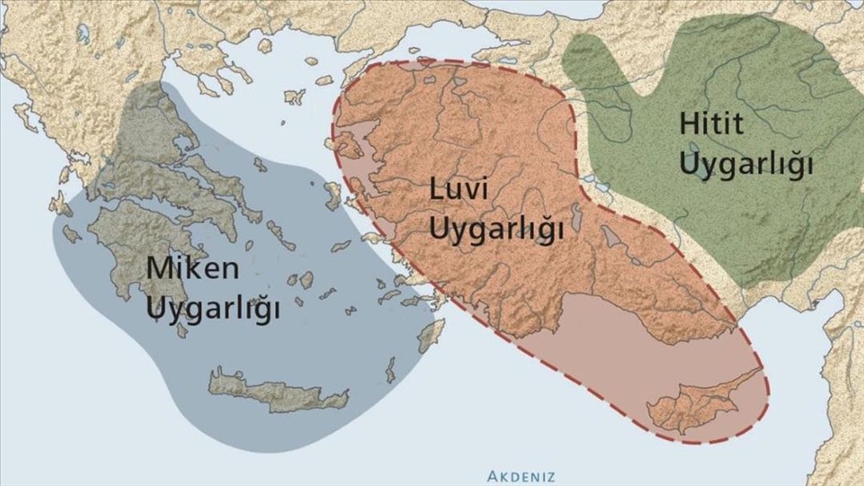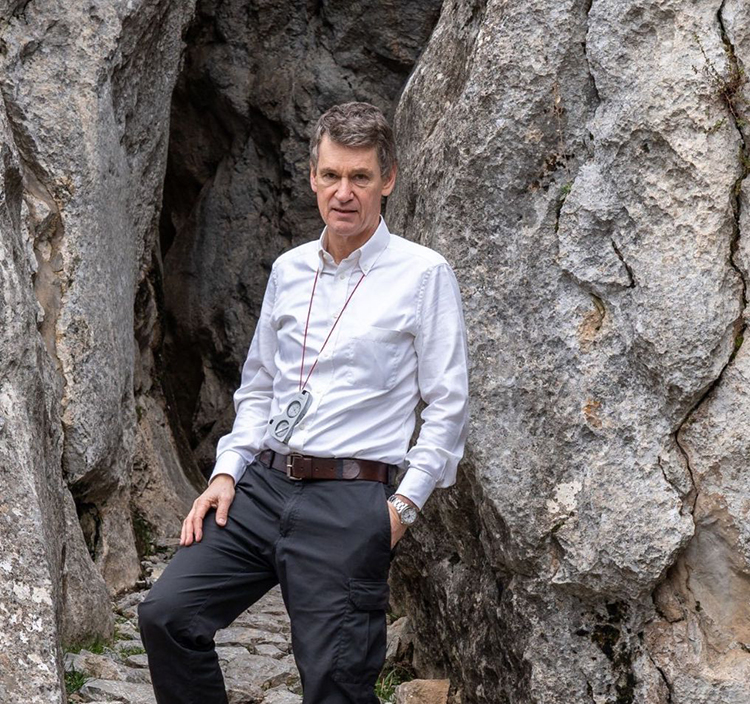
The Luvi Research Foundation has published data on 483 settlements from the Bronze Age in Western Anatolia
The Luvi Research Foundation, based in Switzerland, has released a new open-access database and interactive map providing comprehensive information on 483 significant settlements dating to the Middle and Late Bronze Age in Western Anatolia.
The study titled “An Interactive Look at the Bronze Age” includes detailed information such as the names of archaeological sites and key literature references.
Utilizing semantic network technologies, the study connects the Foundation’s dataset to external internet data sources like Pleiades, Wikidata, and Dbpedia, promoting data sharing among researchers and institutions.
Users can dynamically explore the geographical locations of these ancient settlements through the interactive map.
Eberhard Zangger, President of the Luvi Research Foundation and geoarchaeologist, noted that while the Mycenaean culture of the Bronze Age and the Hittite Empire in Central Anatolia have long been well-documented, the western region of Turkey has historically been perceived by mainstream historiography as a “cultural void inhabited by nomadic tribes.”
Zangger stated, “This misconception has now been debunked. Hundreds of large and permanent settlements indicate that the region inhabited by the Luwians was an important economic and political actor, and that the Luwians may have influenced the dramatic collapse of the Bronze Age around 1200 BCE.”

Zangger responded in writing to questions from an AA reporter regarding the Foundation’s activities. He explained that the Foundation was established in 2014 and is an independent, non-profit organization based in Switzerland.
Emphasizing the significant role of Luwian culture in the context of ancient Anatolian history, Zangger stated, “If we examine a map of known cultures in the Eastern Mediterranean around 1200 BCE, we see that the western part of Turkey is notably empty. The Mycenaean civilization hardly touched the Anatolian mainland, except for a few isolated ports. The Hittites were able to exert control in Western Anatolia during certain periods, primarily focusing on Central Anatolia, but the resource-rich and fertile Western Anatolia played an important role in the historical landscape.”
Zangger noted that recent studies on the Luwians have significantly reshaped historical understandings and corrected many long-standing misconceptions. He pointed out that studies of the ancient world, particularly in fields like art history and classical philology, have historically been influenced by the admiration for Greece that emerged in the 18th and 19th centuries. During that time, Western European scholars often aimed to legitimize European dominance, reinforce the concept of Western superiority, and justify the exploitation of foreign cultures during the colonial period.
“This perspective helped unite a politically fragmented Europe against the Ottoman Empire. Although these outdated values have largely lost their prestige, many of the systems and paradigms established during that time continue to live on, especially in textbooks. Research on Luwian culture, however, presents a fundamentally different approach. These studies are based on natural sciences and are free from the historical prejudices that have influenced archaeology. As a result of the Foundation’s work, we now have a clearer picture of what was happening in the Eastern Mediterranean around 1200 BCE,” he assessed.
Zangger noted that the growing interest in original Anatolian cultures has led to unique challenges in preserving these archaeological sites. “Our research over the past decade has documented Bronze Age settlements in Western Anatolia dating back to the time of the Trojan War (12th or 13th century BCE). These studies indicate a prosperous Bronze Age culture with at least 483 large settlements, some of which have been inhabited for 5,000 years.”
He pointed out that excavating selected areas could provide important information about the 12th and 13th centuries BCE, highlighting that the only known royal center from that period is Troy, but it is also possible to discover another royal center.
“These excavations will enhance our understanding of Turkey’s rich history and attract global interest,” Zangger stated, adding that the discovery of these sites would shed light on the cultural development of the Eastern Mediterranean and its influential heritage in Europe.
Zangger remarked, “Given Turkey’s immense archaeological heritage, the research opportunities regarding the Luwians and Hittites are truly limitless. Since most ongoing excavations in the region primarily focus on Greek and Roman sites, I believe many significant discoveries are still waiting for us. Although our understanding of Bronze Age Anatolian cultures is limited, we have some intriguing clues about the region’s great archaeological mysteries. Advances in technology are fundamentally changing our approach. We can now conduct aerial surveys using drones and helicopters to examine various sites. If we obtain the necessary permits, these initial investigations could lead to groundbreaking findings. For example, we can scan the Trojan Plain using aerial methods to determine the extent of the city’s boundaries. Additionally, we can create a photogrammetric model of the Yazılıkaya Open-Air Temple using a drone in just a few days. By employing these modern techniques, we can effectively enhance the visibility of Turkey’s rich cultural history beyond the well-known Greek and Roman settlements.”
You may also like
- A 1700-year-old statue of Pan unearthed during the excavations at Polyeuktos in İstanbul
- The granary was found in the ancient city of Sebaste, founded by the first Roman emperor Augustus
- Donalar Kale Kapı Rock Tomb or Donalar Rock Tomb
- Theater emerges as works continue in ancient city of Perinthos
- Urartian King Argishti’s bronze shield revealed the name of an unknown country
- The religious center of Lycia, the ancient city of Letoon
- Who were the Luwians?
- A new study brings a fresh perspective on the Anatolian origin of the Indo-European languages
- Perhaps the oldest thermal treatment center in the world, which has been in continuous use for 2000 years -Basilica Therma Roman Bath or King’s Daughter-
- The largest synagogue of the ancient world, located in the ancient city of Sardis, is being restored











Leave a Reply